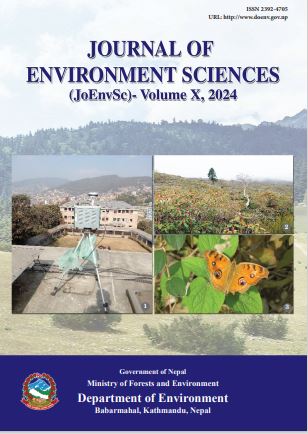Tree Regeneration Status in Community Forests of Mid Hills, Nepal
DOI:
https://doi.org/10.3126/jes.v10i1.66977Keywords:
Community Forest, Himalaya, Nepal, Regeneration, SeedlingAbstract
Tree regeneration is one of the determinant factors for forest sustainability. We assessed the regeneration status of tree species in the four selected community forests of subtropical hills in Lamjung District, central Nepal. We laid 30 square plots (400 m2, 50 m2, and 4 m2) to collect vegetation data and recorded 23 tree species, with seedlings 53,583 individuals/ha, saplings 3,273 individuals/ha and trees 892 individuals/ha. Among the studied community forests, Kirtipur Community Forest had the fairest regeneration with seedlings, i.e., 58,438 individuals/ha. Tree DBH showed the value of the shape parameter of Weibull (c) > 1, supporting ‘mound-shaped’ distribution, indicating a newly regenerated forests with a possibility of attaining sustainable regeneration. The proportion of seedlings showed a good response to medium grazing, trampling, and litter collection. Protecting adult trees with higher DBH is essential to maintain continuous regeneration.




